Walking in Zanskar
3rd September 2018
Previous: Buddha Statues in Ladakh - Lamayuru and Attetse Monasteries
We drive down the winding road from Attetse monastery past people bringing in the barley harvest and return to the main road that heads west to Kargil and Kashmir. Just before the turnoff for Kanji we stop for chai at a roadside Kashmiri tea house, we're all in good spirits and the owner joins us for photographs. There are wonderful views looking south towards Zanskar.
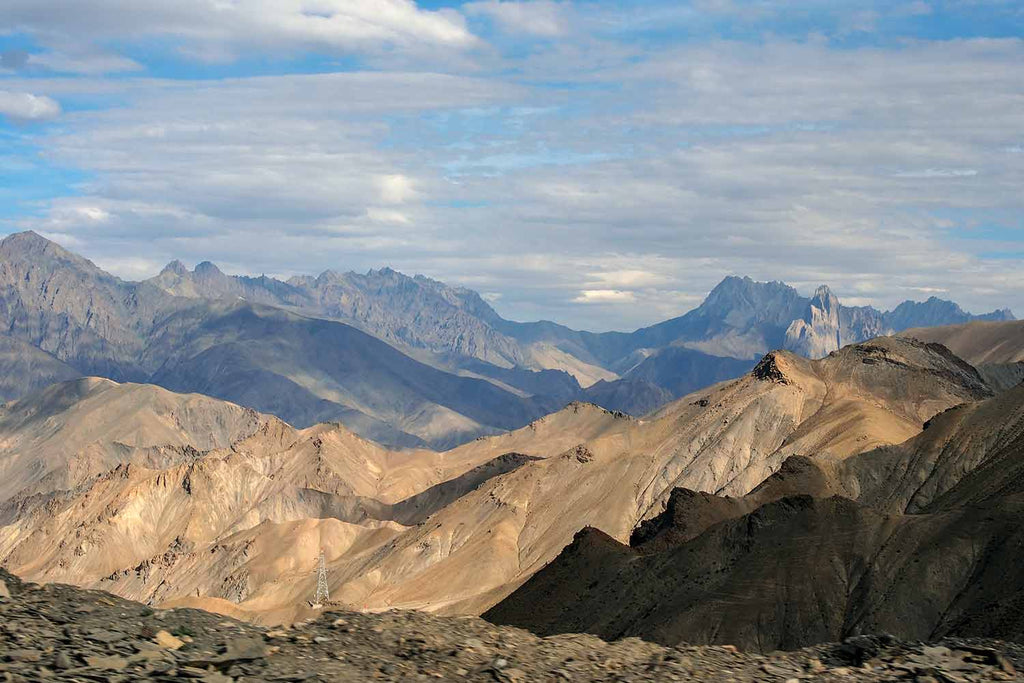
The narrow gorge that leads to Kanji was once a spectacular day's trek, now superseded by a road. Kanji is one of our favourite villages, it's at a junction of three valleys and the old houses sprawl over the lower hillsides; the campsite is just below the village, down by the river. We wander around taking photos in the dying light to add to those we took when we passed through Kanji last year.
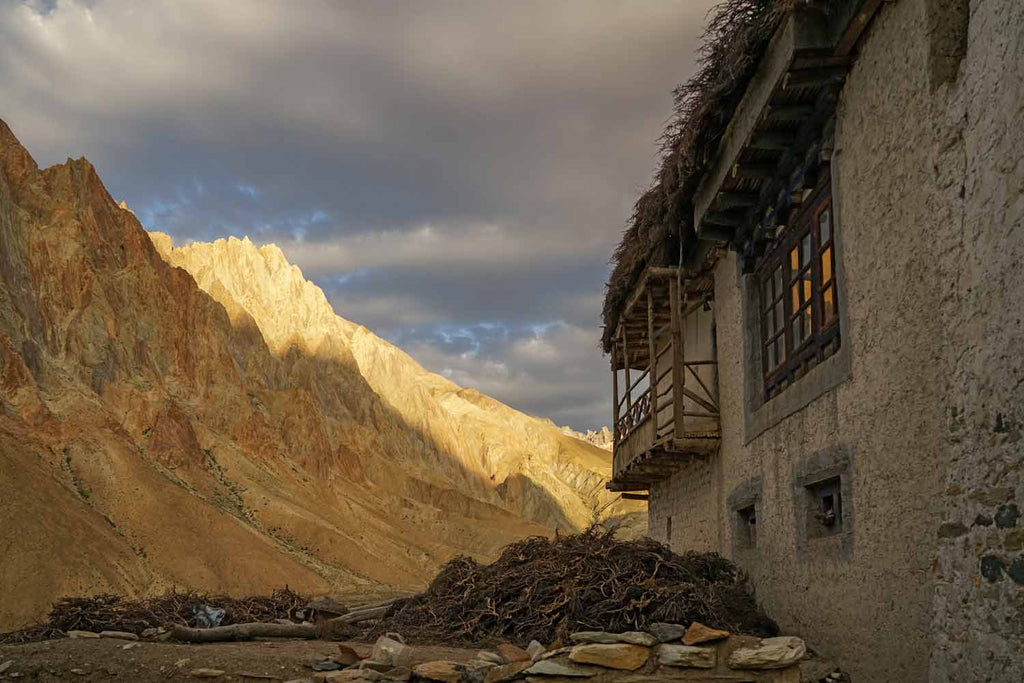
The houses here seem to have grown out of the landscape and many are in a position of crumbling back into that same landscape. There is a row of small stupas under an overhang below some houses with cracked walls which surely must collapse before too long. We talk with family in the house below, the stupas were built by his great great grandfather.
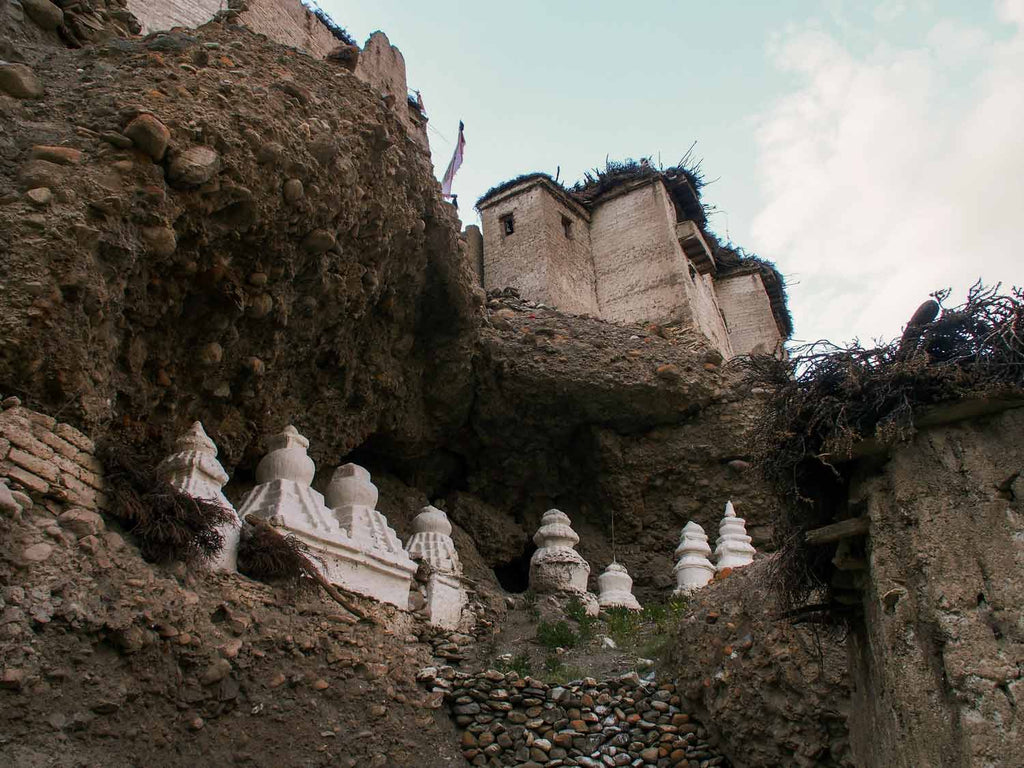

The pony man arrives in the morning, one horse short. He couldn't bring one down from the hillside - a 'naughty horse'. He then complains that there's too much stuff. Normal pony man behaviour. Stanzin had an agreement with him and isn't pleased, we normally keep one 'walking horse' to stay with us to carry reserve clothes and water - and in case we need a ride. But we know today's route, we were here last year, and set off without a walking horse, leaving them to sort out their differences.
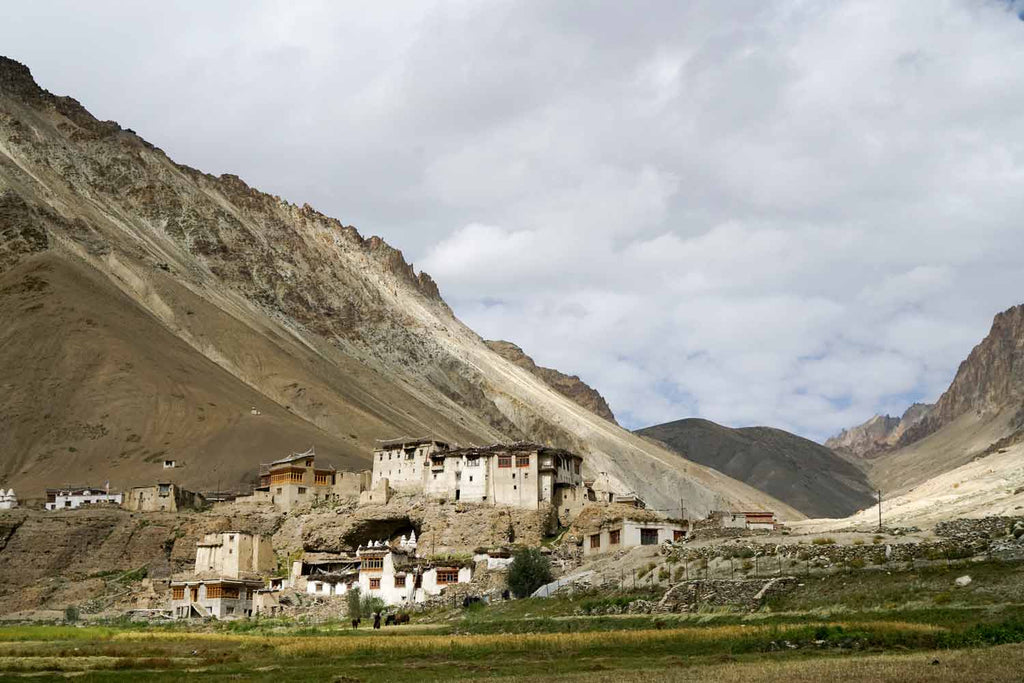
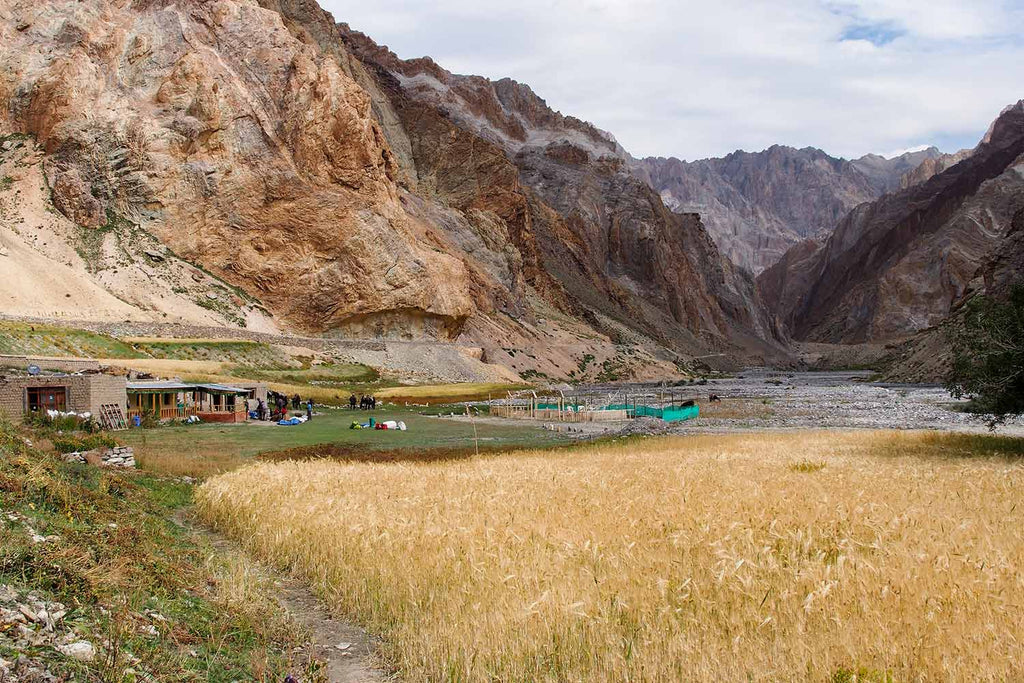
When we first came to Kanji in 2012 the foundations were being laid for a new bridge. The bridge is now under construction. It dwarfs the old bridge by a factor of a hundred and is a complete mystery. Only two families live up the valley and it's hard to see a through road being built to anywhere useful.
There can't be many votes in it and all I can think is that its part of a scheme to gradually develop a whole network of roads to give the army a variety of routes if they need to bring convoys towards the Pakistan border to the north west. Or maybe a lesser bridge would be washed away. Or maybe it's a status symbol for the village.
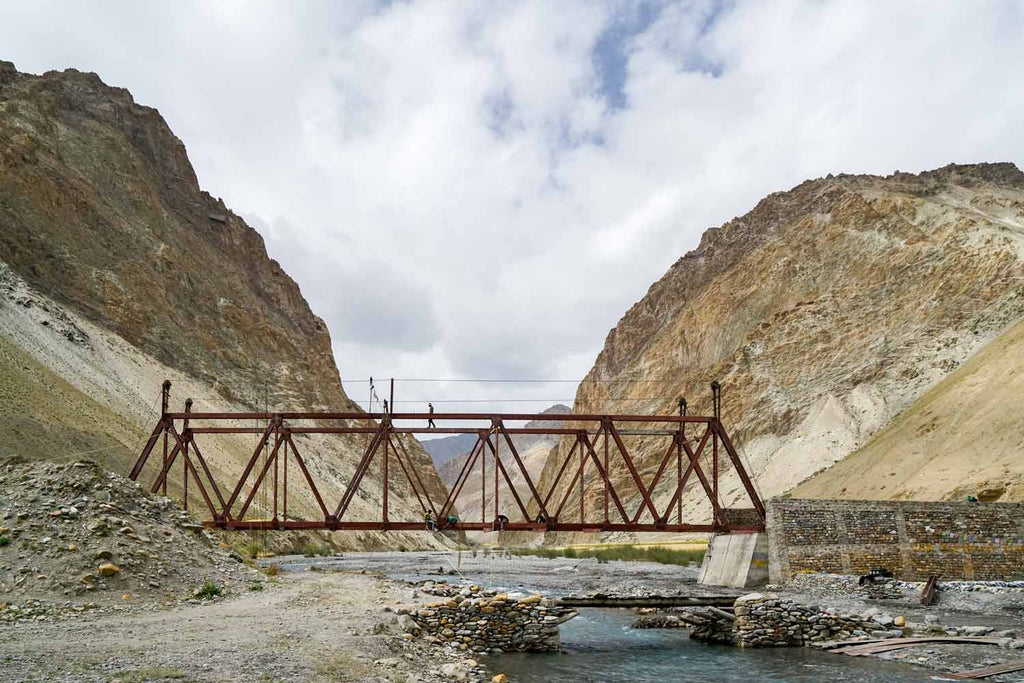
Whole families are in the fields using scythes to gather in the barley. The fields are ringed with tall grasses which provide winter fodder for the animals and a comical sight are lines of donkeys hidden under bales of grass. There are cries of "Jullay" as we walk past the fields. Jullay means hello, goodbye, thank you and all similar terms in Ladakhi. People are greeted with many Jullays. A lovely word with all it conveys.
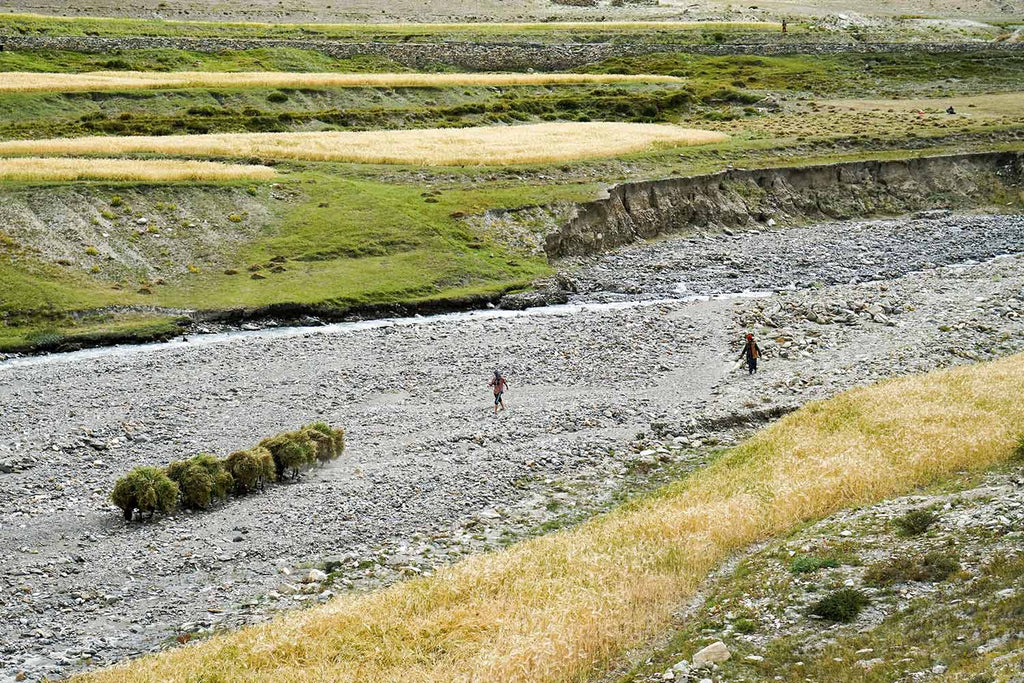
It's easy walking but in spite of the beauty of the surroundings, I'm not feeling good. A toilet stop reveals the worst. Misbehaving bowels. Which plague me for the next three days, draining my energy, necessitating many stops and throwing my blood sugar wildly off course - I have insulin dependent type 1 diabetes. One consequence is that I take hardly any photos.
As a matter of rather prosaic interest, the method for doing the business in a desert like Ladakh is to poo on a low shrub - no-one will step on it and it will dry more quickly in the dry air. Then burn the paper, not easy in the low oxygen of Ladakh but perseverance with a good lighter or waterproof matches does the job.
We walk through a narrow canyon which opens out into a wider valley. Walking progress always seems slower in wider spaces, the view changes more slowly. I'm tired, walking seems to be hard work and mental proliferation kicks in. Maybe I'm too old for this, I was 70 last month and one day I will be too old for it, that can't be denied. Maybe it won't be an interesting route - it's not the one we planned, we couldn't find horses to go to Zanskar - maybe I should have come up with another plan. Maybe I shouldn't try to do the more obscure things but stick to the obvious and popular. Maybe it's Giardia, the symptoms feel like that - sudden tiredness and the bowel thing.
Then I catch myself. All that's wrong is that I'm a bit tired. But we're in a spectacular place, what good fortune. It's a useful reminder that I have this precious opportunity to be able to do this thing I love. Time for sterner stuff. It'll pass.
The ground is littered with rocks of all colours. I pick up two similar fist sized rocks from the path, one is white angular quartz, the other round and iron rust red. Different stories, side by side. There are purple gentians among the stones.
I'm started by a loud bird call that seems right behind me but I can see nothing. Sounds travel a long way here but it's still mystery. Where and what was it?
The path follows river beds for three days. There are river crossings. Stanzin and Tashi reposition rocks so we can leap from rock to rock. I watch Bev make leaps that seem too long but she lands sure-footedly before leaping on to the next. A mixed bag, river crossings - entertaining but for me they come with some trepidation. Easy to slip and older bones easily break. Afterwards - elation. Many Jullays to Stanzin and Tashi, they get us across safely.
At the head of the valley we pass a small farmhouse, Julay jullay, and then fork right. Last year we turned left. We camp near the river.
After the first day we have the walking horse. On a narrow path across a crumbling scree slope it slips off the path and Stanzin has to use all his might to stop it sliding down the hill. He digs his heels in and the horse steadies. I gingerly make my way past Stanzin and take his pack. Slowly the horse climbs back up the scree. Disaster averted.
The following day is more of the same but shorter, for which I'm grateful. I ride the horse for the last hour. But it has only one stirrup and a wooden saddle that threatens my masculinity on the downhills.
Walking carefully over stony ground you spend a lot of the time looking down at the ground. Ladakh is a high altitude desert and, like all deserts, has a multitude of small flowering plants to brighten the way.

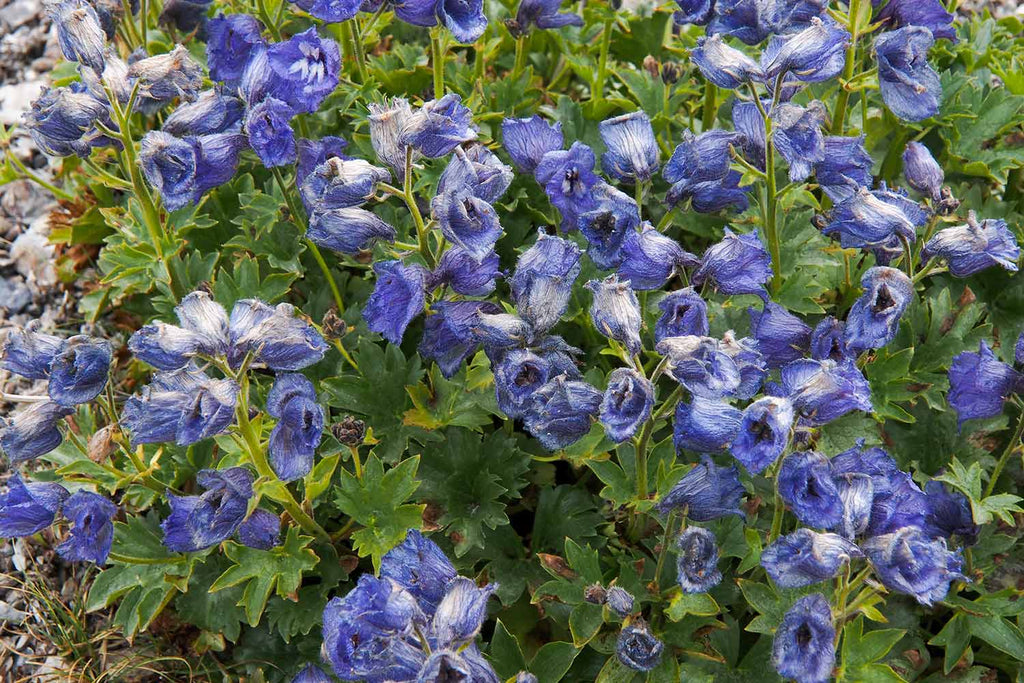
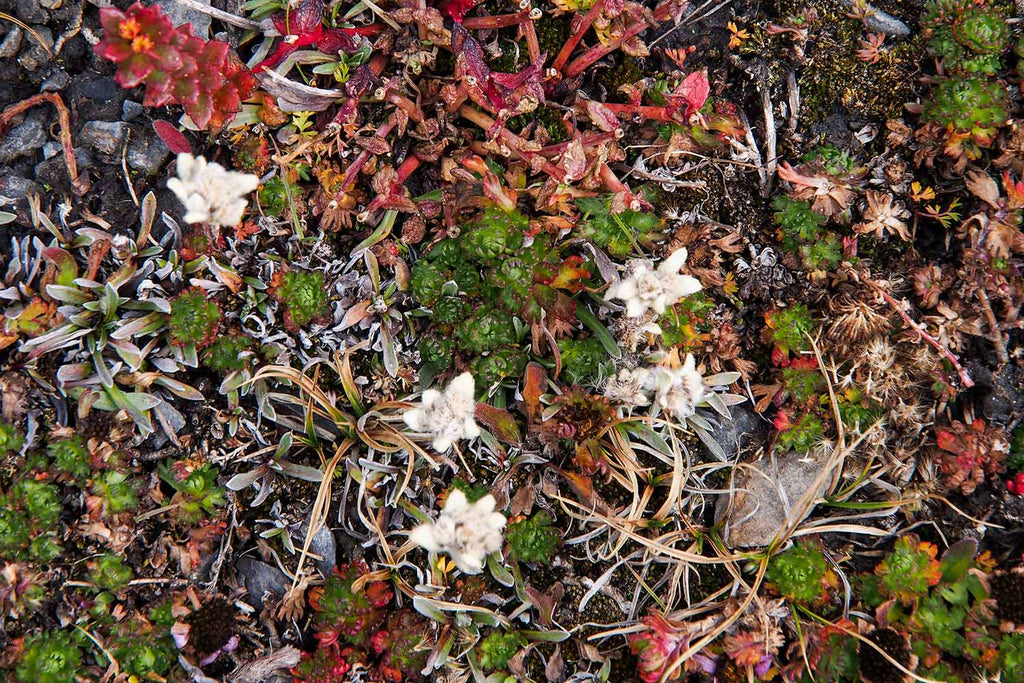

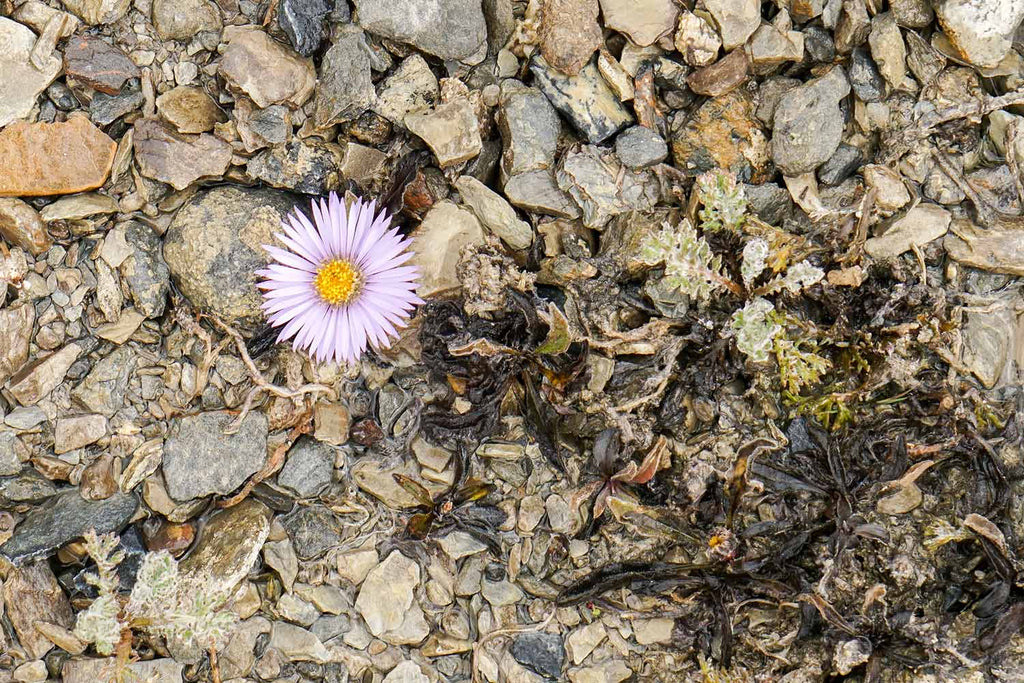
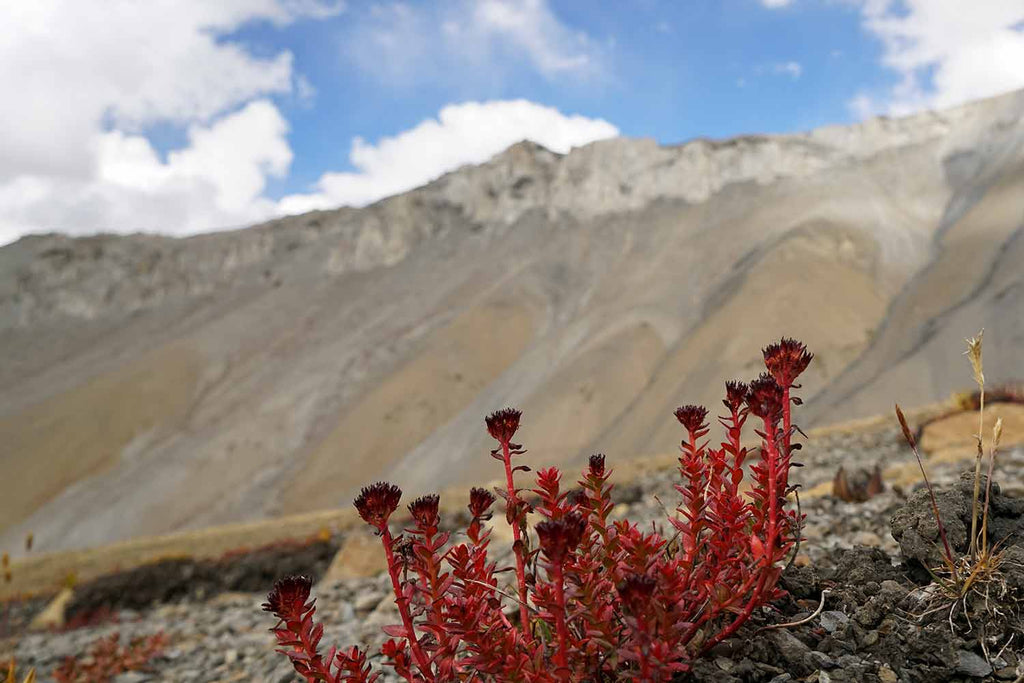
Next - Getting High in Ladakh, Chomotang
Read more about Buddhist monasteries and trekking in Ladakh and Zanskar.
